There are in fact 3 questions in your question :
- Define frontend, middle and back end
- How and when do they overlap ?
- Their associated usual bottlenecks.
What JB King has described is correct, but it is a particular, simple version, where in fact he mapped front, middle and bacn to an MVC layer.
He mapped M to the back, V to the front, and C to the middle.
For many people, it is just fine, since they come from the ugly world where even MVC was not applied, and you could have direct DB calls in a view.
However in real, complex web applications, you indeed have two or three different layers, called front, middle and back. Each of them may have an associated database and a controller.
The front-end will be visible by the end-user. It should not be confused with the front-office, which is the UI for parameters and administration of the front. The front-end will usually be some kind of CMS or e-commerce Platform (Magento, etc.)
The middle-end is not compulsory and is where the business logics is. It will be based on a PIM, a MDM tool, or some kind of custom database where you enrich your produts or your articles (for CMS). It'll also be the place where you code business functions that need to be shared between differents frontends (for instance between the PC frontend and the API-based mobile application). Sometimes, an ESB or tool like ActiveMQ will be your middle-end
The back-end will be a 3rd layer, surrouding your source database or your ERP. It may be jsut the API wrting to and reading from your ERP. It may be your supplier DB, if you are doing e-commerce. In fact, it really depends on web projects, but it is always a central repository. It'll be accessed either through a DB call, through an API, or an Hibernate layer, or a full-featured back-end application
This description means that answering the other 2 questions is not possible in this thread, as bottlenecks really depend on what your 3 ends contain : what JB King wrote remains true for simple MVC architectures
at the time the question was asked (5 years ago), maybe the MVC pattern was not yet so widely adopted. Now, there is absolutely no reason why the MVC pattern would not be followed and a view would be tied to DB calls.
If you read the question "Are there cases where they MUST overlap, and frontend/backend cannot be separated?" in a broader sense, with 3 different components, then there times when the 3 layers architecture is useless of course. Think of a simple personal blog, you'll not need to pull external data or poll RabbitMQ queues.
